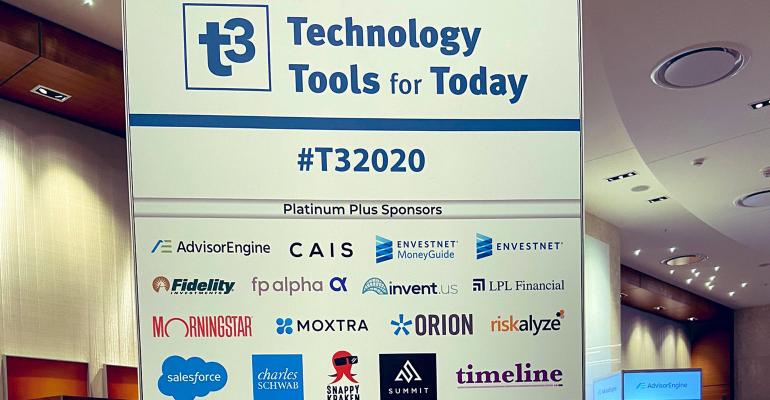The 2020 Technology Tools for Today (T3) conference took place from February 17-20 in San Diego. Joel Bruckenstein’s annual conference presented a prominent stage for leading and emerging wealth management technology providers to showcase their latest product innovations. Tim Welsh, president, CEO and founder of Nexus Strategies, LLC, has transcribed notable highlights from T3 here.
I had the privilege of attending and serving as a panelist at the T3 conference on behalf of Shufro Rose, a registered investment advisory firm based in New York City, and I was amazed by the impressive array of technology products available to financial advisors. As I viewed one product demo after another and contemplated whether it made sense to add the product to Shufro Rose’s existing technology stack, I found myself thinking about how counterproductive it can be to select and implement technology without first answering more fundamental questions about running an advisory firm. Therefore, I thought it would be helpful to revisit thematic questions that are important to answer before making investments in technology.
First, an advisory firm must continuously evolve and articulate a clear value proposition for the role it wants to play in helping clients manage their financial lives. It is imperative to refine core products and services that provide value to your clients in a marketplace of fierce competition and fee compression. Once these foundational aspects of the firm have been well-defined, a firm can more precisely leverage technology to help craft an engaging “Amazon,” “Uber” or “Netflix-like” experience for its clients and for the internal team of financial advisors, client service and operational personnel who are serving the firm’s clients.
Second, an advisory firm must periodically review and enhance usage of processes and technology to deliver an optimal end-to-end experience. Key questions that advisory firms can assess include, but are not limited to:
- Are we capturing client data accurately and comprehensively, with minimum iterations, to:
- Open an account?
- Create a financial plan?
- Allocate client assets in proper alignment with the client’s goals and risk tolerance?
- Are we making it easy for clients to open and fund accounts easily and digitally?
- Are we quickly and accurately responding to clients—whether it is wiring money to complete the purchase of a new home or answer a client’s question?
- Have we established clear roles and responsibilities so that financial advisors and client service personnel can maximize time spent with clients and not get bogged down in tackling non-client-facing activities?
- Are we measuring efficacy of processes and technology using quantifiable metrics such as time spent on a process or number of errors made?
- Are we entering the same data in multiple systems manually? Is there a better way to enter data once and then have systems feed the data automatically?
- Do we have proper compliance oversight and cybersecurity protocols in place?
Third, it is critical for an advisory firm to recognize that change within our industry and within clients’ expectations is constant. Therefore, establishing a culture within your firm to embrace change and adopt technology enhancements seamlessly is a key differentiator for successful advisory firms. There are numerous steps that advisory firms can take to promote adoption:
- Designate and empower champions of process and technology within your firm—these key members of the team should be tasked with the ongoing responsibility of:
- Taking ownership of day-to-day execution
- Assessing and challenging the current state and recommending improvements
- Keeping up with enhancements made by vendors and promoting usage of enhancements through proactive training and communication across the firm
- Check in with clients and prospects on what you can do better
- For existing clients, check in to gauge what you are doing well and what you can do better to exceed client needs
- For prospects where you did not earn their business, ask why and assess what you can do as a firm to get better
- Use metrics to make informed strategic decisions and changes as a firm
- Benchmark studies, such as the annual T3/Inside Information Advisor Software Summary (2020 survey results were revealed at T3) or as performed by most custodians, provide comparable metrics for firms to assess their investments and adoption of technology and other practices relative to peer firms.
The rapid evolution of technology is becoming impossible for advisory firms to ignore. Conferences such as T3 provide advisors with a close-up view of technology products that are available to help grow their businesses. It is important to remember, though, that implementing technology by itself, to just keep up with the times, can be disruptive, expensive and frustrating. Instead, it is the firms that first assess their practices to identify meaningful opportunities to leverage the proper technology products that have greater chances of success to enhance the client experience and create operational efficiencies.
Vibhaw Arya is the chief operating officer of Shufro, Rose & Co., an RIA in New York City.

